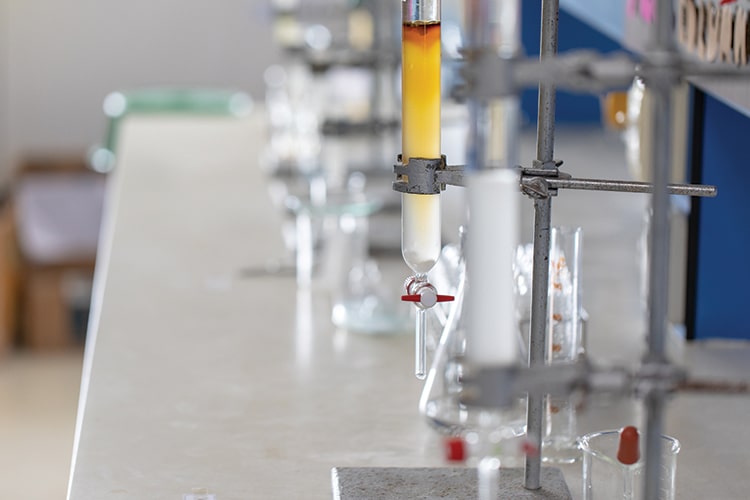By Theodore Provder
The coatings technologies of waterborne, high solids, powder, and radiation curable coatings generally require high-molecular-weight latex polymers or strategically designed low-molecular-weight polymers, oligomers, and reactive additives. The design of these resin materials requires molecular weight distribution (MWD) information in the very high and very low-molecular-weight ranges which are accessible by size-exclusion chromatography (SEC). In addition, there is a need for compositional distribution information as a function of molecular weight, particularly for oligomers; absolute MWD information, particularly for water-soluble polymers; and chain-branching information for high-molecular-weight polymers.
This overview discusses the SEC separation mechanism, molecular weight calibration methods including the use of hydrodynamic volume, data treatment methods, and polymer chain-branching determination. The use of molecular size sensitive detectors (viscometer, light scattering) and compositional sensitive detectors (UV-visible, IR) are discussed in the context of illustrative qualitative and quantitative examples. The practice of high-resolution SEC analysis of oligomers is discussed and illustrated with problem-solving examples.
INTRODUCTION
During the past several decades, new coatings technologies, such as high solids, powder, waterborne, and radiation curable coatings have been developed to meet the challenges of: (a) governmental regulations in the areas of ecology [volatile organic compounds (VOC) emissions]; (b) long-term increasing costs of energy, and petroleum-based solvents; (c) more active public consumerism; and (d) the continual need for cost-effective, high-performance coatings in a highly competitive and global business environment.
These new coatings technologies require the use of water as the major solvent with water-soluble or high-molecular-weight latex polymers or the use of strategically designed low-molecular-weight polymers, oligomers, and reactive additives that when further reacted produce high-molecular-weight and crosslinked polymers. Knowledge of the molecular weight and molecular-weight distribution (MWD) of the polymer components in a coatings system is essential for the optimization of polymer design for specific end-use properties.
Since its introduction, many decades ago, gel-permeation chromatography (GPC)1, or size-exclusion chromatography (SEC), has become an important and practical tool for the
determination of the MWD of polymers. Numerous studies have been published on the use SEC in plastics, elastomers,
and coatings systems including several monographs 2-15. With the advent of high-efficiency columns, the resolution in the lower-molecular-weight region (molecular weights in the range of 200 to 10,000) has been greatly improved and the speed of analysis increased. These features make high-performance SEC (HPSEC) an indispensable characterization tool for the analysis of oligomers and polymers used in environmentally acceptable coatings systems.
SEC Separation Mechanism
Size-exclusion chromatography separates the polymer molecules by their molecular size or “hydrodynamic volume” in solution. The separation occurs as the polymer molecules elute through one or more columns packed with a porous support. Smaller molecules are retained in the pores to a greater degree than the larger molecules. As a result, the largest size molecule (or the molecule having the greatest hydrodynamic volume) elutes from the column first followed by the smaller molecules.
The volume of liquid at which a solute elutes from a column or the volume of liquid corresponding to the retention of a solute on a column is known as the retention volume (V R) and is related to the physical parameters of the column, such as interstitial (void) volume (V0), and internal pore volume. The dependence of molecular size in solution upon retention volume is schematically illustrated in Figure 1. The void volume V0 corresponds to the total exclusion of solute molecules from the pores. The excluded solute molecules are significantly larger than the largest available size pores. Between V0 and VR the solute molecules are selectively separated based on their molecular size in solution.
Beyond the total column volume VT, separation will not be achieved by a liquid exclusion chromatography mechanism. If molecules appear to separate beyond VT they are being retained on the column support by an affinity mechanism. The fundamental aspects of the SEC separation mechanism have been treated theoretically by Casassa et al.16-20, Giddings21, and Yau et al.22, 23 These treatments are based on an equilibrium distribution of species between the mobile phase in the interstitial volume and the species in the pore volume of the column support.
CONTINUE READING IN THE APRIL 2021 DIGITAL ISSUE OF COATINGSTECH.
